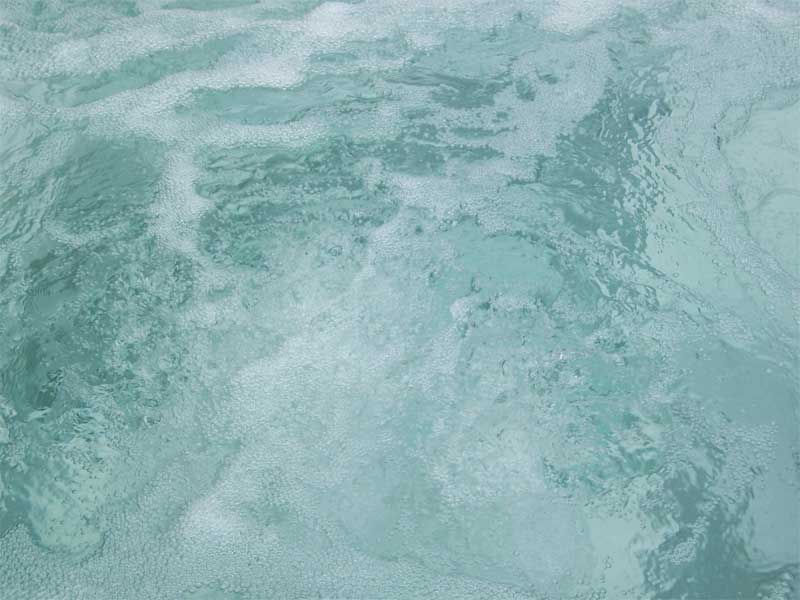Preventing and removing biofilm to protect bathers

Ideally, maintaining chlorine levels at 3 to 5 ppm or bromine levels at 4 to 6 ppm will effectively prevent the formation of biofilm. Unfortunately, not every hot tub owner stays on top of his or her chemical routine, allowing biofilm to quickly form.
Biofilm is a pre-existing collection of bacteria, microbes, and cells that are surrounded by an impenetrable protective layer. Once there is a biofilm buildup, chlorine or bromine cannot effectively kill bacteria within the biofilm matrix. Biofilm forms a plastic-like substance called extracellular polysaccharides (EPS) that acts like a protective slime layer allowing a collection of bacteria and microbes to form a matrix, and begin colonizing.
It only takes a short period for bacteria to multiply rapidly in poorly sanitized hot tub water. Once a biofilm colony forms, a routine sanitizer treatment program will continue to kill bacteria; however, it will not eradicate the bacteria protected within the biofilm layer. The minute hot tub water does not have an adequate sanitizer level, biofilm takes advantage of this opportunity and the bacteria quickly mobilize to form a protective colony.
The more biofilm builds up in the hot tub water, the more the sanitizer tries to fight the gunk in plumbing, rather than working to keep the water clear and healthy. Biofilm will always have a safe breeding ground no matter the amount of sanitizer present in the hot tub water.
The biofilm formation process
It is important to understand how biofilm forms. Organic matter such as sweat, bacteria, cosmetics, and body secretions will lead to the formation of slimy deposits if they are not destroyed by sanitizers. Even when the water is treated with chlorine or bromine, these deposits remain in the water, settling and sticking to the nearest surface and act as a food source for viable bacteria.
Suspended particles, organic matter, and viable microbes in hot tub water are normally positively charged and can associate and form cumulative aggregate or settle onto surfaces (e.g. inside plumbing) where water is slow moving or stagnant.
Once the initial colonization has started, viable bacteria will quickly begin the process of biofilm construction. Bacteria will enter and exit the biofilm cell matrix. They settle, forming colonies and cell matrices easily. The surface also is normally positively charged, but there is no significant charge repulsion; therefore, they associate naturally.
Quite simply, the only options available for combating these slimy deposits found in the crevasses of hot tubs are to prevent or purge.






